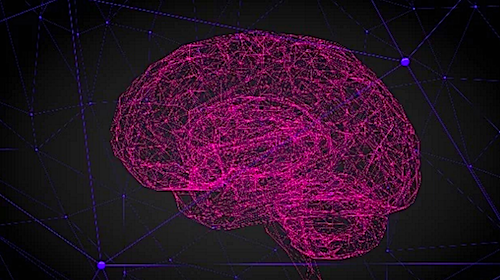|
|
Developmental Biology - Stopping Parkinson's Disease
Molecule Offers Hope for Stoping Parkinson's
A promising molecule offers hope for stopping or slowing Parkinson's, something no current treatment can do...
Researchers from the University of Helsinki found the molecule BT13 has the potential to boost levels of dopamine, a chemical lost through Parkinson's disease, while also protecting dopamine producing brain cells from dying.
Results from this study, co-funded by Parkinson's United Kingdom (UK) and published online in the journal Movement Disorders, shows an increase in dopamine levels in brains of mice following injection with the BT13 molecule.
Typically, by the time people are diagnosed with Parkinson's, they have already lost 70 to 80 per cent of their dopamine-producing brain cells, which help coordinate all muscle movement.
While current treatments mask these symptoms, they cannot slow down its progress or prevent more brain cells from being lost. And, as dopamine levels continue to fall, symptoms get worse and new symptoms can appear.
Researchers are working continuously to improve properties of BT13 to make it more effective as a treatment to benefit the current 145,000 people living with Parkinson's in the UK today.
The study builds on previous research of another molecule targeting the same brain receptors. Glial cell line-derived neurotrophic factor (GDNF) is also undergoing experimentation as a treatment for Parkinson's. While results are not clear cut, GDNF shows promise in restoring damaged glial cells.
However, the GDNF protein requires complex surgery to deliver it to the brain as it is a large molecule that cannot cross the blood-brain barrier - a protective barrier that prevents indiscriminate substances from entering the brain.
BT13 is smaller than GDNF, so is able to cross the blood-brain barrier. Therefore it could more easily be administered for treatment, if shown to be beneficial in future clinical trials.
"People with Parkinson's desperately need a new treatment that can stop the condition in its tracks, instead of just masking the symptoms.
"One of the biggest challenges for Parkinson's research is how to get drugs past the blood-brain barrier, so the exciting discovery of BT13 has opened up a new avenue for research to explore, and the molecule holds great promise as a way to slow or stop Parkinson's.
"More research is needed to turn BT13 into a treatment to be tested in clinical trials, to see if it really could transform the lives of people living with Parkinson's."
David Dexter PhD, Professor and Deputy Director of Research at Parkinson's UK.
Adds Yulia Sidorova PhD and lead scientist:
"We are constantly working to improve the effectiveness of BT13 — now testing a new series of similar BT13 compounds our computer program predicts may have even better characteristics. Our ultimate goal is to bring these compounds to clinical trial within a few years."
Abstract
Background
Motor symptoms of Parkinson's disease (PD) are caused by degeneration and progressive loss of nigrostriatal dopamine neurons. Currently, no cure for this disease is available. Existing drugs alleviate PD symptoms but fail to halt neurodegeneration. Glial cell line–derived neurotrophic factor (GDNF) is able to protect and repair dopamine neurons in vitro and in animal models of PD, but the clinical use of GDNF is complicated by its pharmacokinetic properties. The present study aimed to evaluate the neuronal effects of a blood-brain-barrier penetrating small molecule GDNF receptor Rearranged in Transfection agonist, BT13, in the dopamine system.
Methods
We characterized the ability of BT13 to activate RET in immortalized cells, to support the survival of cultured dopamine neurons, to protect cultured dopamine neurons against neurotoxin-induced cell death, to activate intracellular signaling pathways both in vitro and in vivo, and to regulate dopamine release in the mouse striatum as well as BT13's distribution in the brain.
Results
BT13 potently activates RET and downstream signaling cascades such as Extracellular Signal Regulated Kinase and AKT in immortalized cells. It supports the survival of cultured dopamine neurons from wild-type but not from RET-knockout mice. BT13 protects cultured dopamine neurons from 6-Hydroxydopamine (6-OHDA) and 1-methyl-4-phenylpyridinium (MPP+)–induced cell death only if they express RET. In addition, BT13 is absorbed in the brain, activates intracellular signaling cascades in dopamine neurons both in vitro and in vivo, and also stimulates the release of dopamine in the mouse striatum.
Conclusions
The GDNF receptor RET agonist BT13 demonstrates the potential for further development of novel disease-modifying treatments against PD. © 2019 International Parkinson and Movement Disorder Society.
Authors
Arun Kumar Mahato MSc, Jaakko Kopra PhD, Juho-Matti Renko MSc, Tanel Visnapuu PhD, Ilari Korhonen MSc, Nita Pulkkinen MSc, Maxim M. Bespalov PhD, Andrii Domanskyi PhD, Eric Ronken PhD, T. Petteri Piepponen PhD, Merja H. Voutilainen PhD, Raimo K. Tuominen MD, PhD Mati Karelson PhD, Yulia A. Sidorova PhD and Mart Saarma PhD.
Acknowledgements
Funding Information
• Centre of Excellence in Molecular Cell Engineering. Grant Number: 2014-2020.4.01.15-013
• Estonian Research Council. Grant Number: PUT582
• Finnish Parkinson's Foundation fellowship
• FP7-HEALTH-2013-INNOVATION-1. Grant Number: GA N602919
• FP7-PEOPLE-2013-IAPP. Grant Number: GA N612275
• Genecode Ltd
• Lundbeckfonden
• Parkinson's UK Innovation grant. Grant Number: K-1408
• Sigrid Jusélius Foundation
• Suomen Akatemia. Grant Numbers: 1325555, 293392, 319195
• The Finnish Funding Agency for Innovation (TEKES, 3iRegeneration). Grant Number: 40395/13
Parkinson's UK is the largest charitable funder of Parkinson's research in Europe. The charity has invested £93 million into researching Parkinson's and treatments since 1969.
Return to top of page.
| |
|
Mar 4 2020 Fetal Timeline Maternal Timeline News
 Parkinson's results from brain cell death and the subsequent loss of dopamine and muscle control. There are over 40 symptoms from anxiety to tremors and pain. Some respond to treatment, but drugs can have serious side effects. Parkinson's worsens over time with no cure to date. The human brain above represents how anyone can get Parkinson's, young and old. Every hour two more people are diagnosed. CREDIT stock image
|



